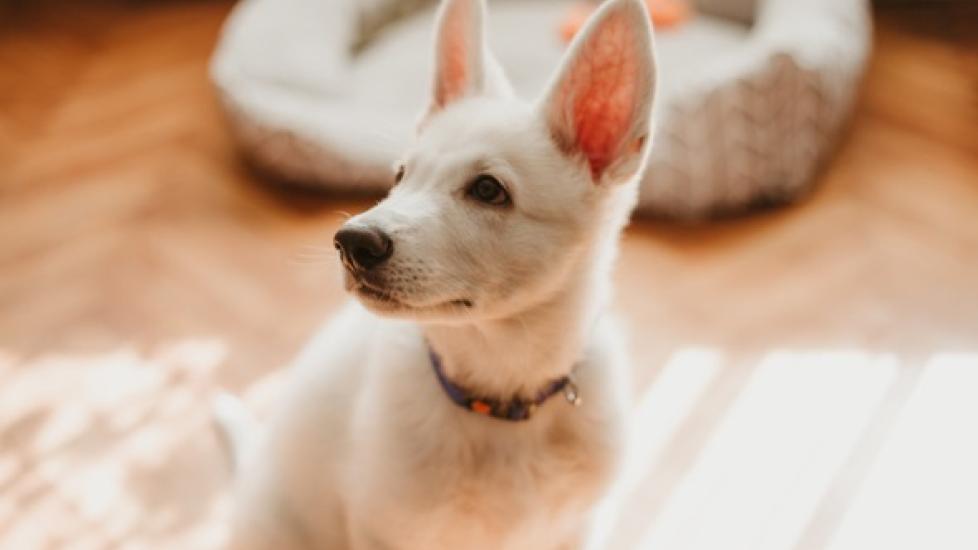5 Quick Tips for Dog Obedience Training
Everyone wants a perfectly well-behaved dog. But not everyone realizes how much work goes into having a well-behaved dog.
A lot of time and effort goes into building a strong relationship with your dog and helping them build good obedience skills. When done correctly, practicing obedience with your dog can be a great bonding activity that helps the two of you grow even closer.
Here’s some insight and tips on dog obedience training.
Why Is Obedience Training Important?
While training your dog to do entertaining tricks like play dead, shake, and fetch can be fun, there’s a lot more to obedience training than that.
Good, basic obedience can help you keep your dog safe.
For example, a strong recall, where your dog responds and comes back to you, can get your dog out of a potentially dangerous situation (like running in the street). A strong “drop it” cue can help you keep dangerous or life-threatening items out of your pet’s mouth.
Basic obedience can also help your veterinarian out, because it will make your dog a better patient.
5 Tips for Basic Obedience Training With Your Dog
So how do you get started with basic obedience? Here’s a quick, how-to guide for helping your dog with obedience training.
1. Start Training Early (or right when you get your new dog home)
If you have a puppy, start training as soon as you can.
If you have adopted an adult dog, carefully evaluate him to determine what he knows and how you can further his knowledge.
By starting early, it helps you to develop a bond as well as really imprint these skills in your dog’s mind.
2. Find Your Dog’s Million-Dollar Treat
Not every dog works for food. Some dogs prefer grooming, toys, or playtime. You’ll need to figure out what your dog sees as a high-value reward, so that you can get them focused and motivated.
You should also have different levels of rewards—this allows you to reward your pet according to the level of importance of a skill. For example, a well-executed recall cue should be rewarded with the highest-value treat because that’s a life-saving skill.
3. Make Dog Obedience Training Fun
Training does not have to be a serious occasion.
In school, weren’t you more inclined to learn from engaging teachers? These teachers made learning fun.
Using positive reinforcement and creating new learning games is a great way to train your dog.
Here are a few examples of dog trainers who make obedience training fun for you and your dog:
-
Recallers with Susan Garrett
-
Kikopup with Emily Larlham
-
Absolute Dogs with Tom Mitchell and Lauren Langman
4. Be Consistent and Use Positive Reinforcement
Pick cues that you remember so that you use them consistently instead of using different cues each time and expecting the same response from your dog.
Do not use the same cue to mean more than one thing—that is confusing. Try not to overuse any cue, especially your dog’s name.
Do not punish your dog for mistakes. Punishment can lead to a poisoned cue and diminished trust between the two of you. Always use rewards.
For more about cues, look at:
-
Susan Garrett’s Recallers
5. Help Your Dog Get Comfortable at the Vet
Your dog will need to go to the veterinarian for his wellness checks and if he gets sick. This should not be stressful for you or your dog.
There are many ways to train your dog to accept being handled by the veterinarian and having procedures done.
A great resource is Fear Free Happy Homes, which provides resources for how to help your dog have fear-free vet visits. They also have a directory of fear-free certified veterinarians that well work with you to minimize your dog’s stress.
You can also ask your veterinarian about “happy” visits. These are visits where your dog will create positive associations with their veterinarian. During a visit, your dog will:
- Go to the office
- Get treats from the staff
- Get on the scale
- Go into an exam room
- Leave
In these visits, your dog will have no medical procedures, just pets and treats from you and the veterinary staff while they navigate through a typical vet visit routine.
This teaches your dog that these people are his friends. Help your dog build this trust with their vet so that visits aren’t overwhelmingly stressful for everyone.
Featured Image: iStock.com/Kosijerphotography
